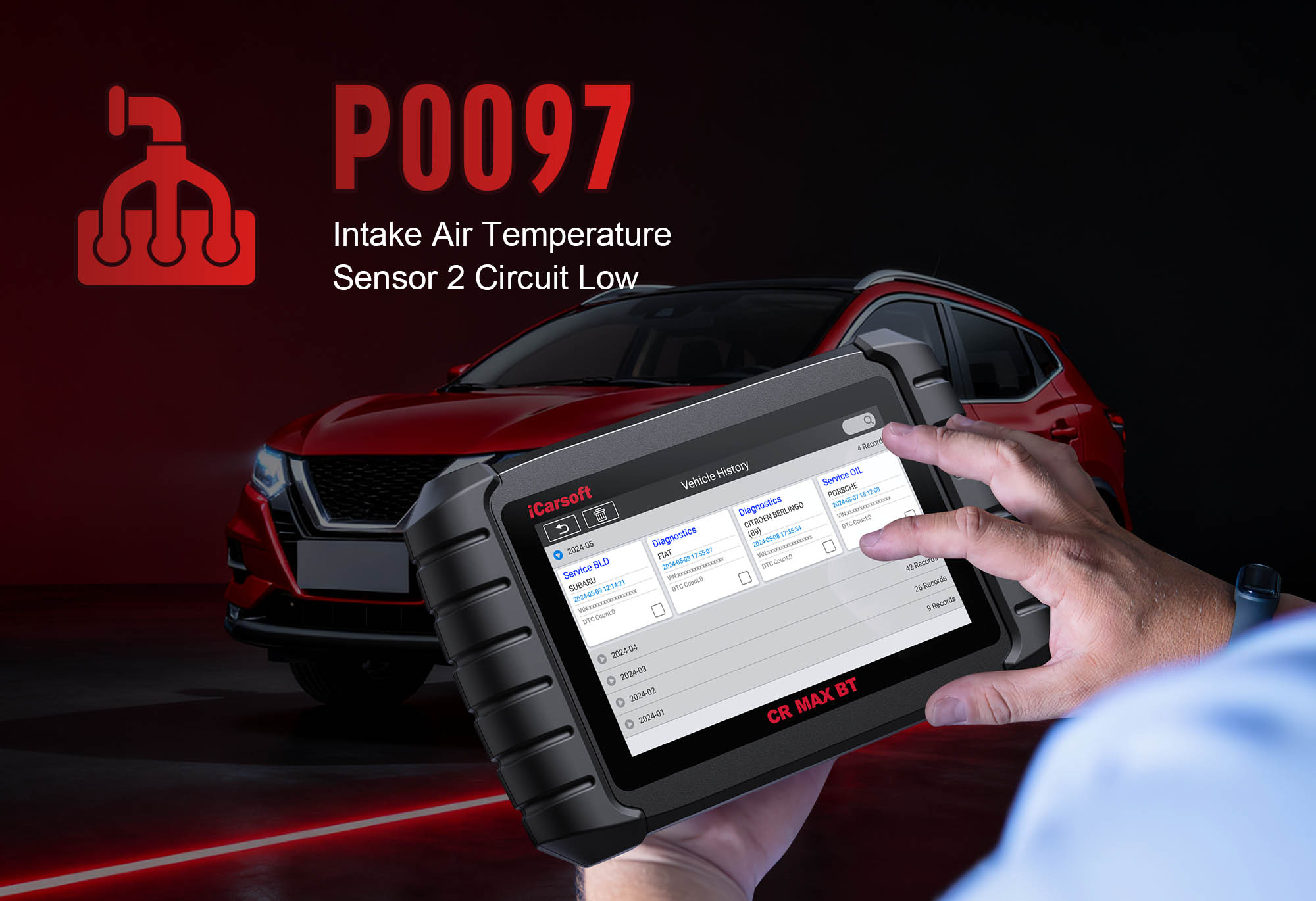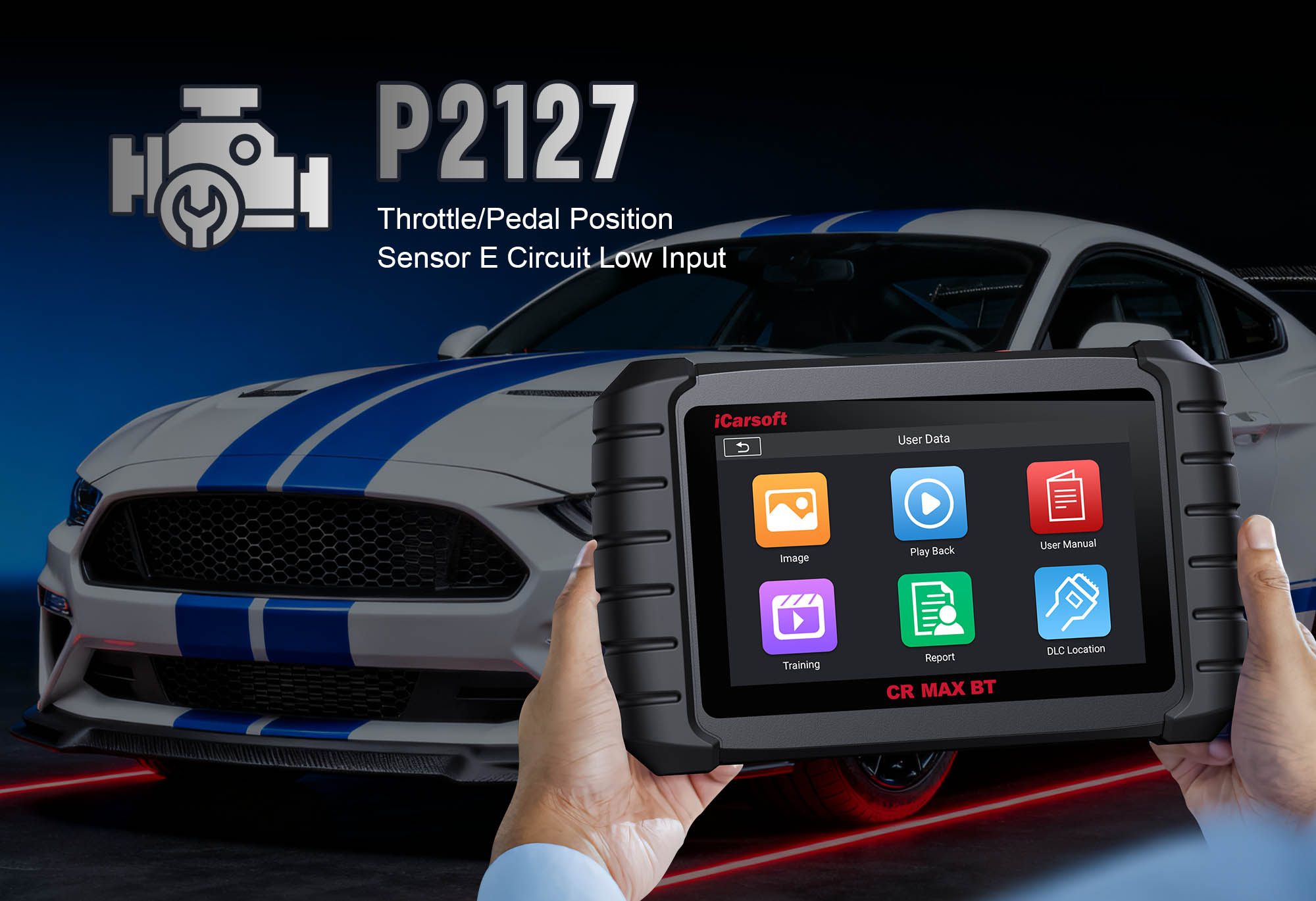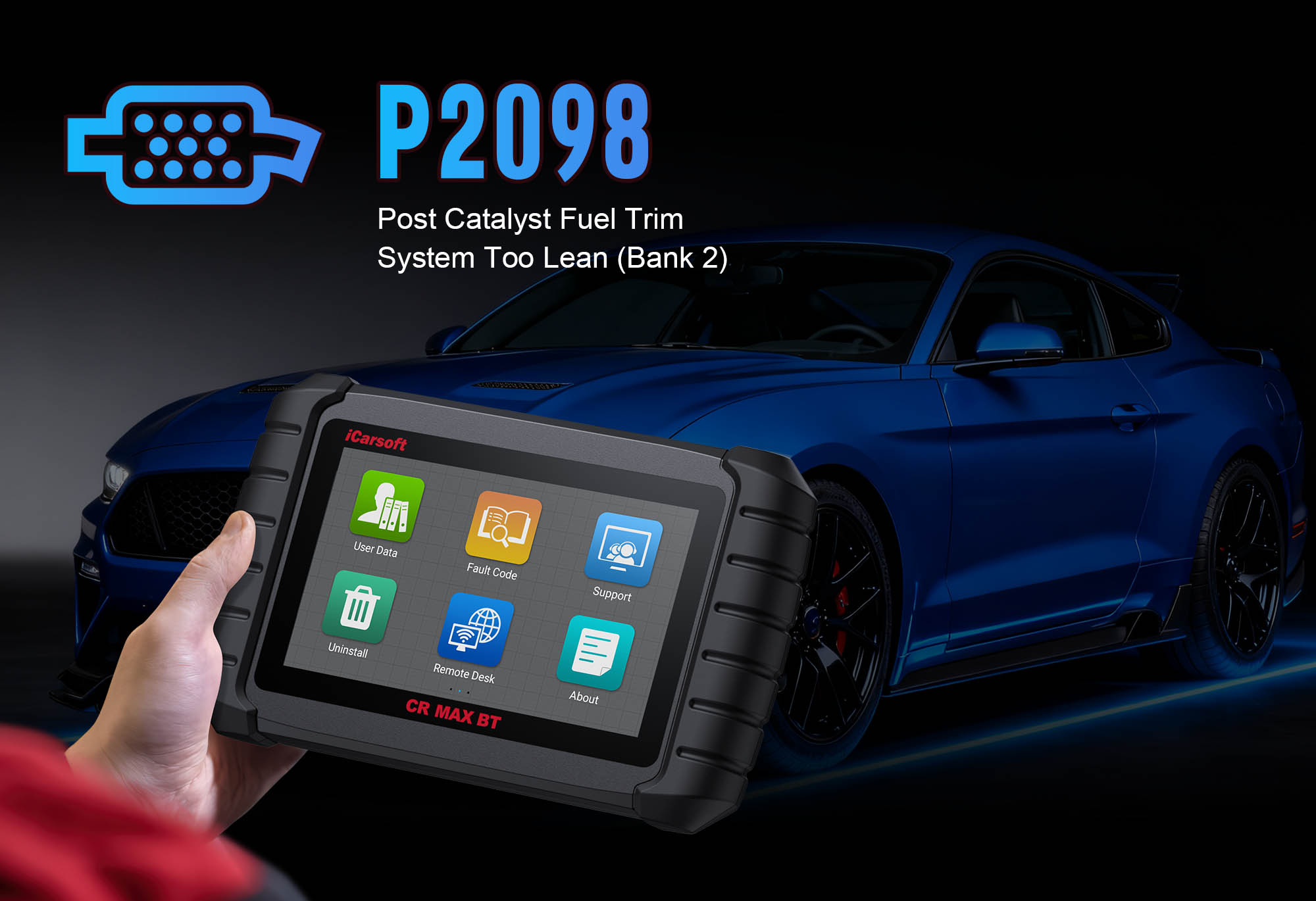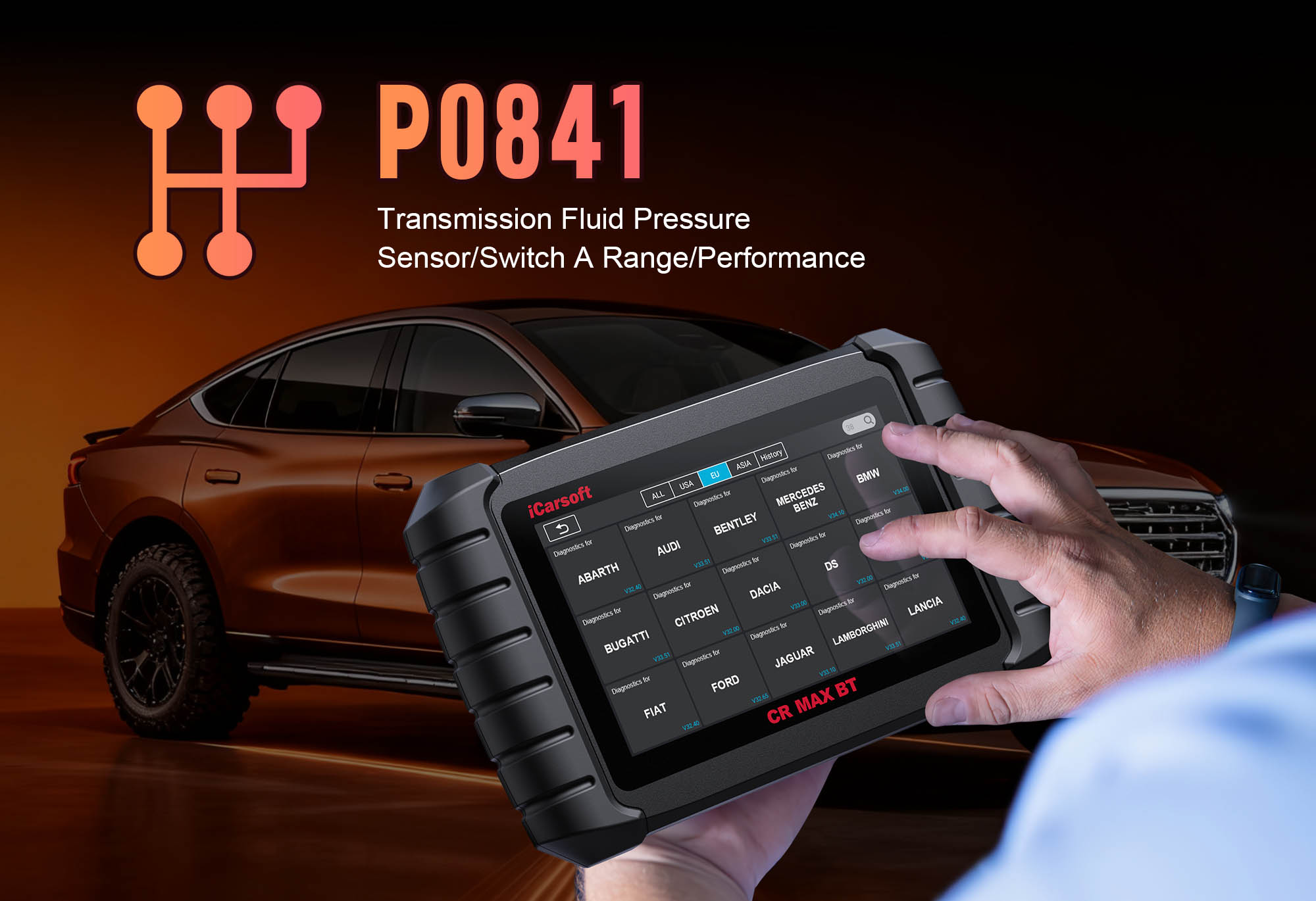Diagnose & Clear P0097 with iCarsoft CR MAX BT: Fix Intake Air Temperature Sensor Circuit High Voltage (Bank 1, Sensor 2)
Diagnose & Clear P0097 with iCarsoft CR MAX BT
If your vehicle’s check engine light turns on, you notice sluggish acceleration, or it struggles in cold weather, a diagnostic scan will likely return P0097. This OBD-II code stands for "Intake Air Temperature (IAT) Sensor Circuit High Voltage – Bank 1, Sensor 2"—a fault targeting the secondary IAT sensor. The secondary sensor is usually mounted in the intake manifold or air intake system on cylinder bank 1.
The IAT sensor measures incoming air temperature to help the Engine Control Module (ECM) adjust fuel injection and ignition timing. When it sends abnormally high voltage signals, the ECM uses incorrect air-fuel ratios, leading to poor performance, reduced fuel efficiency, and potential engine wear. Basic scanners can’t isolate faults, but the iCarsoft CR MAX BT with specialized diagnostics solves this. Let’s break down how to resolve P0097 step by step.
Understanding P0097: Symptoms & Causes
The Bank 1, Sensor 2 IAT sensor works with the primary IAT sensor (Sensor 1) to provide redundant temperature data. It uses a thermistor—resistance drops as temperature rises, and voltage decreases (反之亦然). P0097 triggers when the ECM detects circuit voltage above the manufacturer’s threshold (usually >4.5V), indicating an open circuit or signal loss.
Key Symptoms of P0097
-
Illuminated Check Engine Light (CEL): A steady CEL turns on, and some vehicles display an "Air Intake System Warning" on the dashboard.
-
Sluggish Acceleration: The ECM uses a rich default fuel mixture (thinking "cold" air is entering), causing hesitation when accelerating.
-
Poor Fuel Economy: Overfueling from incorrect temperature data drops mileage by 10–20%.
-
Cold-Start Issues: The sensor fails to detect cold air, so the ECM doesn’t adjust for cold starts—leading to rough idling or difficulty starting in low temps.
-
Reduced Power: Inconsistent air-fuel ratios limit engine power, especially during highway merging or passing.
Common Causes of P0097
|
Cause
|
Description
|
|
Faulty IAT Sensor
|
The thermistor inside Bank 1, Sensor 2 fails (common in dirty/extreme temp environments), sending high-voltage signals.
|
|
Damaged Circuit Wiring
|
Frayed wires, rodent chew marks, or corrosion in power/ground lines create an open circuit, leading to high voltage.
|
|
Loose/Corroded Connector
|
The sensor’s 2–3 pin connector (near intake manifold) becomes loose or rusted, breaking the electrical connection.
|
|
Blown IAT Sensor Fuse
|
A dedicated "IAT Sensor" or "Intake Air Temp" fuse in the under-hood box blows, cutting power to the circuit.
|
|
ECM Malfunction
|
Rarely, the ECM’s internal IAT monitoring circuit fails, incorrectly detecting high voltage.
|
Why iCarsoft CR MAX BT Excels at Diagnosing P0097
The CR MAX BT outperforms basic tools with features tailored to IAT sensor circuit diagnostics. Here’s its key value:
Wireless Bluetooth Connectivity
Test hard-to-reach Bank 1, Sensor 2 (near intake manifold) from up to 30 feet away—no cords hinder engine bay access.
Live IAT Voltage Tracking
Monitors real-time circuit voltage (0.5V–4.5V normal) and highlights high-voltage issues (>4.5V) instantly.
Sensor Resistance Tests
Built-in multimeter checks thermistor resistance, verifying if the sensor responds correctly to temperature changes.
AutoVIN Identify
Automatically detects vehicle make/model and IAT specs (voltage range, pinouts) in seconds—no manual lookup.
ECM Communication Tests
Verifies if the ECM receives/processes sensor signals, ruling out module malfunctions.
Step-by-Step: Diagnose & Clear P0097 with iCarsoft CR MAX BT
-
Initial Visual Inspection (Save Time First)
1. Locate the sensor: Use CR MAX BT’s Component Location > Engine > Intake System > IAT Sensor (Bank 1, Sensor 2) (Bank 1 = cylinder #1 bank; Sensor 2 = secondary, near throttle body/intake manifold).
2. Check the connector: Inspect for corrosion/bent pins—clean with electrical contact cleaner, apply dielectric grease.
3. Inspect wiring: Follow harness to ECM, check for frays/heat damage—repair with heat-shrink, replace if severe.
4. Check the IAT fuse: Use Fuse Guide to locate and test "IAT Sensor" fuse—replace if blown.
-
Connect the Tool & Confirm P0097
Plug CR MAX BT into OBD-II port, power on, select AutoVIN Identify to retrieve specs. Navigate to Engine > Fault Codes > Read Codes to confirm P0097. Tap Code Details for vehicle-specific insights (e.g., "Ford F-150: IAT High Voltage; Expected 0.5–4.5V, Actual 5.0V"), and check related codes (e.g., P0096, P0112).
-
Monitor Live IAT Sensor Data
Start the engine, idle 5 minutes (stabilizes sensor). Navigate to Engine > Live Data > Intake Air Temperature > Bank 1, Sensor 2:
- Voltage: Normal = 0.5V (hot, ~100°F) to 4.5V (cold, ~-40°F); >4.5V confirms P0097.
- Temperature: Compare to primary IAT (Bank 1, Sensor 1) and ambient temp—stuck "-40°F" = faulty sensor.
- Responsiveness test: Warm sensor with a low-heat hair dryer—voltage should drop, temp rise. No change = faulty sensor.
-
Test IAT Circuit Integrity
Turn off engine, disconnect sensor connector (wear gloves—engine hot):
1. Power wire test: Set multimeter to "DC Voltage"—touch power pin ("V+" in pinout) + ground. Ignition "ON" = 5V/12V (vehicle-dependent); 0V = blown fuse/broken wire.
2. Ground wire test: Set to "Ohms"—touch ground pin ("GND") + chassis ground. Normal = <1 ohm; >5 ohms = poor ground.
3. Signal wire test: Check continuity between signal pin and ECM (use wiring diagram)—no continuity = broken wire.
-
Test the IAT Sensor Resistance
1. Remove the sensor: Disconnect connector, unbolt from intake (use Component Removal Guide for torque specs).
2. Room temp resistance: Set multimeter to "Ohms"—touch signal/ground pins. Good = 2–10 kOhms (70°F, check Sensor Specs); infinite resistance = faulty.
3. Temperature response: Submerge tip in ice water (32°F) 5 mins—resistance increases (10–20 kOhms); then warm water (100°F)—resistance decreases (1–2 kOhms). No change = faulty.
-
Repair & Clear P0097
- Blown fuse: Replace with OEM-compatible fuse (same amperage).
- Wiring/connector: Repair frays, clean with dielectric grease.
- Faulty sensor: Replace with OEM-equivalent (use Part Lookup—e.g., Bosch 0280130039 for GM, Denso 234-0001 for Toyota)—torque to 8–10 ft-lbs.
- ECM malfunction: Consult dealer for reprogramming/replacement (last resort—confirm with ECM communication test).
Clear code: Go to Engine > Fault Codes > Clear Codes to delete P0097.
-
Validate the Repair
1. Monitor data: Confirm IAT voltage ranges 0.5V–4.5V, temp matches ambient conditions.
2. Test drive: Operate 20–30 minutes (include cold starts/highway acceleration)—ensure CEL stays off.
3. I/M Readiness Test: Run via OBDII Functions for emissions compliance.
4. Save report: Use History & Report to store diagnostic data.
Preventing P0097 Recurrence
-
Regular Sensor Checks: Use Service Reminder to test Bank 1, Sensor 2 every 30,000 miles—catch thermistor wear early.
-
Wiring Protection: Inspect harness every 15,000 miles for rodent damage/heat wear—use heat-resistant loom near the engine.
-
Air Filter Maintenance: Replace air filter per Maintenance Schedule—prevent dirt buildup on the sensor (causes premature failure).
-
Lifetime Free Updates: Use One-Key Upgrade (Wi-Fi) to add new IAT diagnostic features.
Conclusion
P0097’s high-voltage IAT sensor fault disrupts fuel efficiency and engine performance, but the iCarsoft CR MAX BT simplifies diagnosis with wireless convenience, live tracking, and resistance tests. Whether you’re a DIYer or pro, this tool ensures you fix the root cause—avoiding trial-and-error and poor engine performance.
With global vehicle coverage and 40+ service functions, the CR MAX BT is a long-term investment. Restore accurate intake air temperature monitoring, regain acceleration, and drive with confidence—all with one professional-grade tool.





